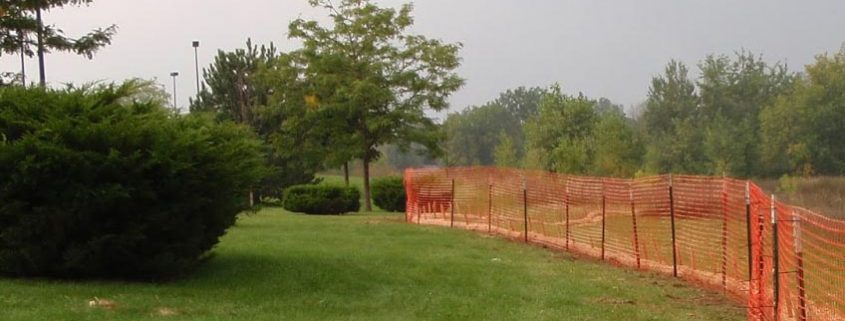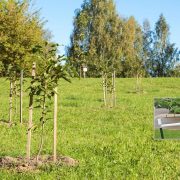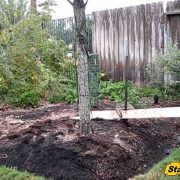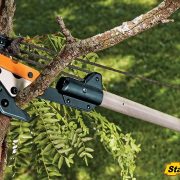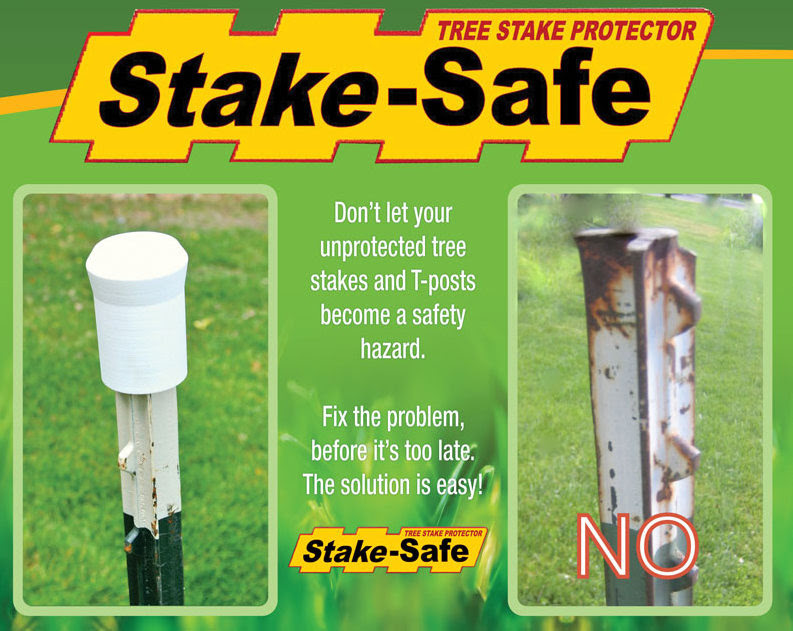Protecting Existing Trees from Construction Damage by Installing Orange Safety Barriers
When working on construction sites or home landscaping projects, consideration must be given to protecting existing trees. Preventing damage to exposed tree roots and trunk bark can be crucial to the trees ultimate survival. The best method for protecting existing trees from potential injury can be as simple as installing a well-marked barricade around the tree, or group of trees. Installing a bright orange safety barrier like the one in the photo can save the day.
The main function of the protective barrier is to keep construction equipment away from the tree itself. The major concern is that the heavy equipment will make contact with the tree trunk itself and inflict damage to the bark. Which in many cases can be a fatal blow, depending on the particular species of the tree. For the most part, damaged trees that have had a substantial portion of the bark ripped off will need immediate attention in order to save the tree. The tree bark provides protection for the thin layer of vascular tissue that transports water and other nutrients from the ground to the upper portion of the tree.
Barrier Installation Tips for Protecting Existing Trees
We talked about protecting the tree truck from damage, which seems obvious enough. But what about the lower limbs that can also be damaged by heavy machinery? The overhead limbs are often overlooked and can be just as critical to the survival of existing trees. With this in mind, you should install your Orange Safety Barrier just outside the dripline of the tree. The circle of the barrier will be just beyond the tips of the lower branches of the trees.
If you do happen to inadvertently break off any tree branches, take a look at our article “Sealing Tree Limbs After Cutting” to learn how to seal the exposed area in order to prevent further damage to the tree. Time is of the essence; you should apply sealant to the exposed area of the tree as soon as possible after the damage occurs.
When using heavy machinery on the construction site or in your backyard, you may need to take additional steps to protect the tree roots as well. The roots of a mature tree may lie just below the surface, or in some cases they may even extend above the ground. The best method for protecting exposed tree roots is to apply a thin layer of wood chips around the base of the tree. The bed of wood chips or mulch should fill the entire area inside the barricade. A generous layer of mulch about 4” deep will provide adequate protection.
Your construction or landscaping project may also encompass the installation of new trees. Be sure to read our post on “How to Properly Stake Newly Planted Trees”. To comply with OSHA regulations pertaining to construction sites, be sure to cover your stakes for safety.

